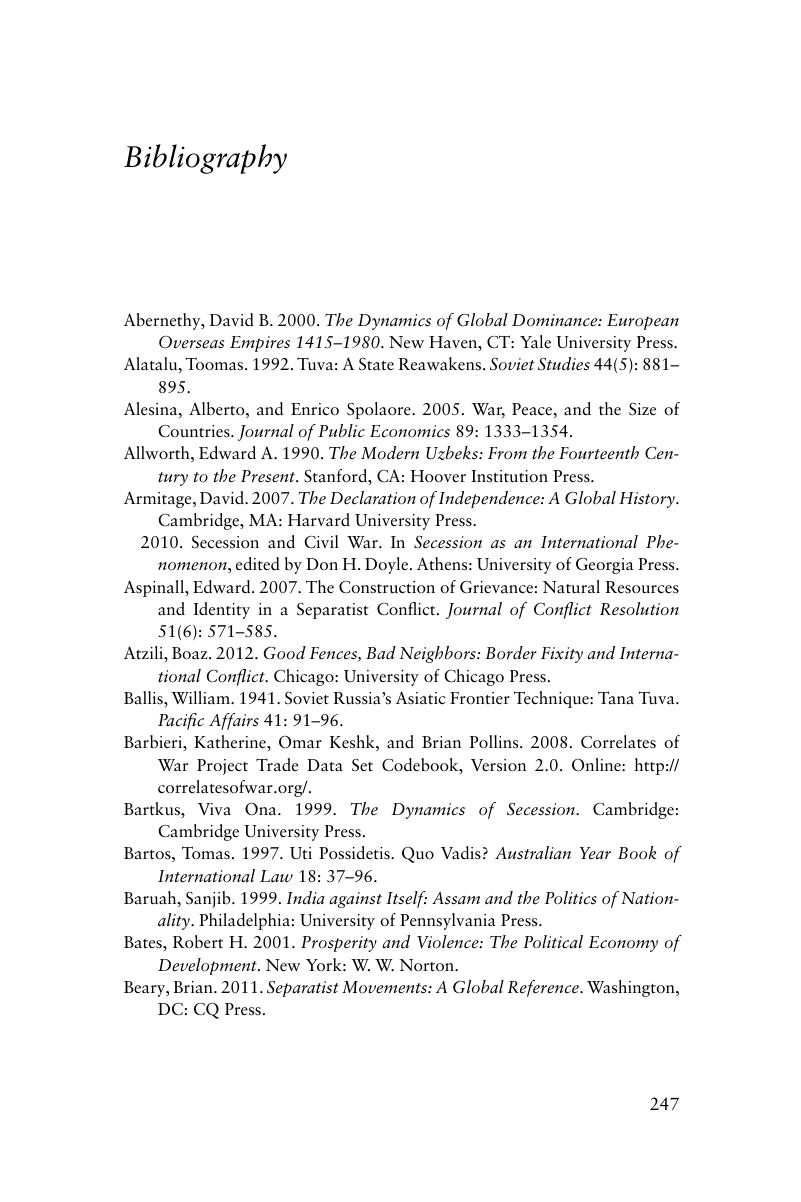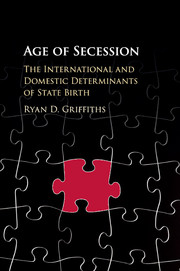Book contents
- Age of SecessionThe International and Domestic Determinants of State Birth
- Reviews
- Age of Secession
- Copyright page
- Dedication
- Contents
- Figures
- Maps
- Tables
- Acknowledgments
- 1 Introduction
- 2 Theory of Metropolitan Response
- 3 A Quantitative Analysis of Secessionist Outcomes
- 4 The Expansion and Contraction of the British Empire
- 5 The Arc of Russian Rule
- 6 India and Its Many Nations
- 7 Conclusion
- Book part
- Bibliography
- Index
- References
Bibliography
Published online by Cambridge University Press: 10 July 2017
- Age of SecessionThe International and Domestic Determinants of State Birth
- Reviews
- Age of Secession
- Copyright page
- Dedication
- Contents
- Figures
- Maps
- Tables
- Acknowledgments
- 1 Introduction
- 2 Theory of Metropolitan Response
- 3 A Quantitative Analysis of Secessionist Outcomes
- 4 The Expansion and Contraction of the British Empire
- 5 The Arc of Russian Rule
- 6 India and Its Many Nations
- 7 Conclusion
- Book part
- Bibliography
- Index
- References
Summary

- Type
- Chapter
- Information
- Age of SecessionThe International and Domestic Determinants of State Birth, pp. 247 - 264Publisher: Cambridge University PressPrint publication year: 2016



